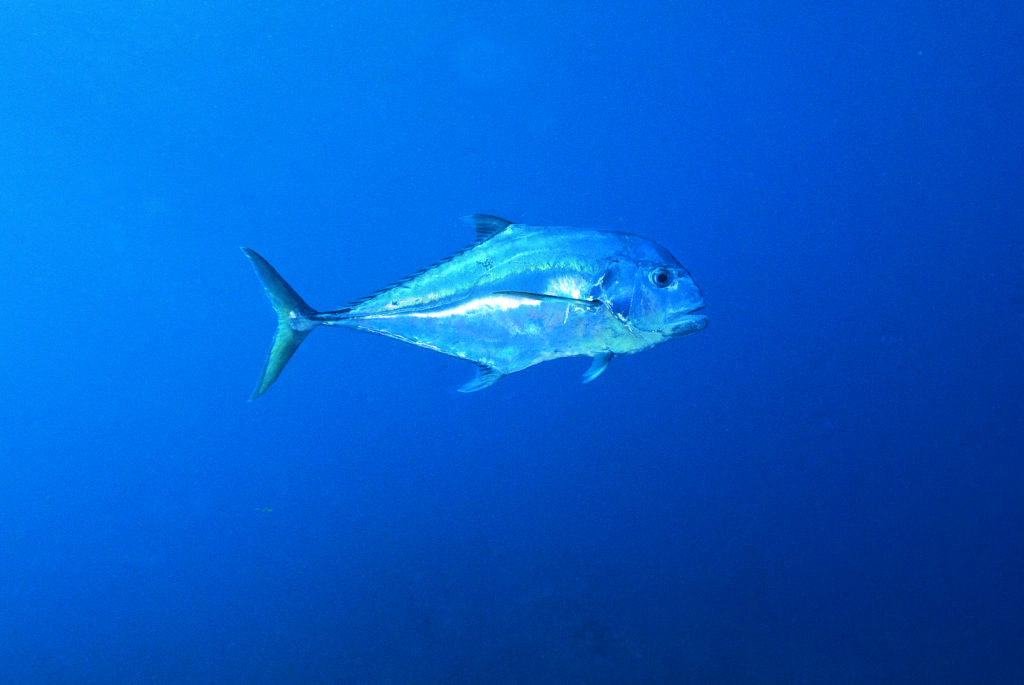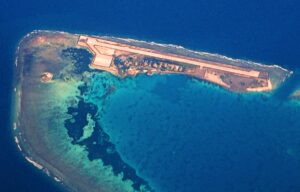Seasoned dive photo journalist Al Hornsby is left entranced by the underwater topography and marine life in the Komodo National Park, not to mention the fabled dragons.
I’m sitting on a grass-covered ledge high up a rocky prominence on the small, hourglass-shaped island of Gili Lawa Laut. A brief climb up a ridge from the curving, white-sand beach below has brought me to a view that is nothing short of remarkable. With a golden sun setting over my shoulder, the softly-lit, pale blue sea in front of me stretches away to merge near-seamlessly with the cloudless sky, creating a strange and lovely panorama, with a scattering of small, jutting islets appearing to float somewhere between the two. The larger mass of Komodo Island forms a darker backdrop in the distance. It’s a quiet, utterly exotic scene.
At this point, we’re in the midst of our sail, aboard the 30-metre-long, two-masted Indonesian Phinisi schooner Moana, from Labuhan Bajo, Flores through the heart of the Komodo Islands National Park. We’re heading steadily southward, where we’ll soon trade the sparklingly-clear, warm waters of the north for the cool, life-filled waters around the island of Rinca, and, oh yeah, its wandering hordes of Komodo dragons.
The trip through the Komodos can only be described as incredible… with the unspoiled, natural beauty of the rough, mountainous islands rising from the sea, and the raucous wonderland of the sprawling, teeming reefs and spires just below the surface.
Throw in the quiet comfort of a huge, traditionally-styled, sailing schooner like the Moana, with evenings spent under a blaze of stars like can only be seen in the world’s truly remote regions, and you have an overall experience that most people have never even imagined. (Yes, I utterly enjoyed my time in the Komodos.)
But, as memorable as my sunset atop Gili Lawa Laut had been, it was actually the dive just before heading to the beach that remains one of the highlights of the trip for me. Just a few kilometres off the island, the tip of a rocky spire just breaks the surface of the (very clear and blue, here) sea, a site called Castle Rock, known for massive schools of fish and cruising sharks in the currents off its outer, drop-off edge. It’s an exciting, high-velocity dive experience, with something happening every moment.
However, the smaller spire just to the south-west was even more amazing – the spot I’m to describe.Jutting up to near the surface just a short swim from Castle, Crystal Rock is a more current-protected dive, with a complex, rambling seascape. In ultra-clear water, we descended down behind its calm southwest side and passed through swarms of bannerfish, eye-striped surgeonfish and humpback snapper toward a second, submerged pinnacle.
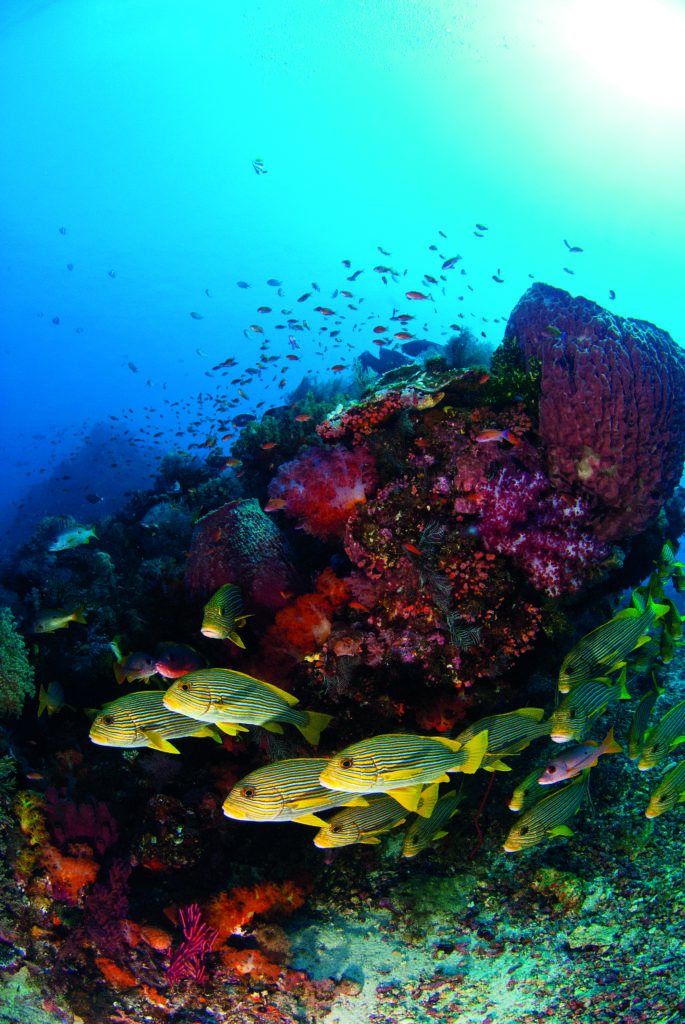
At 25m, we found a wonderland of coral prominences and large boulders utterly covered in brilliant, orange soft corals, red gorgonian fans and rust-coloured barrel sponges. Schooling ribbon sweetlips were everywhere, and pinnate and golden spadefish meandered about, all adding their own bright hues to the mix. For our safety stop, we ascended back to the main pinnacle’s quiet shallows, the rock’s face coated with orange and yellow cup corals and low, soft corals.



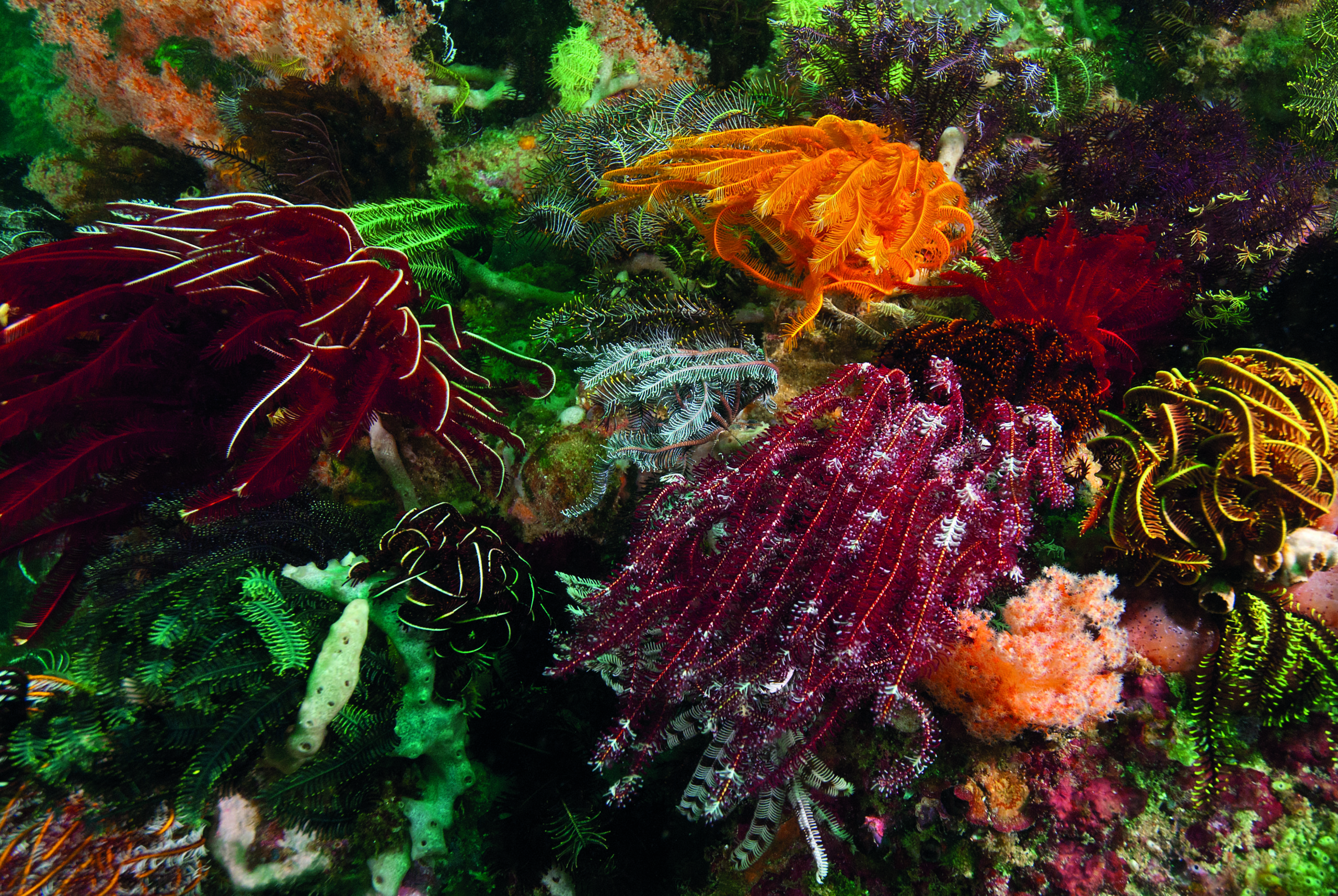
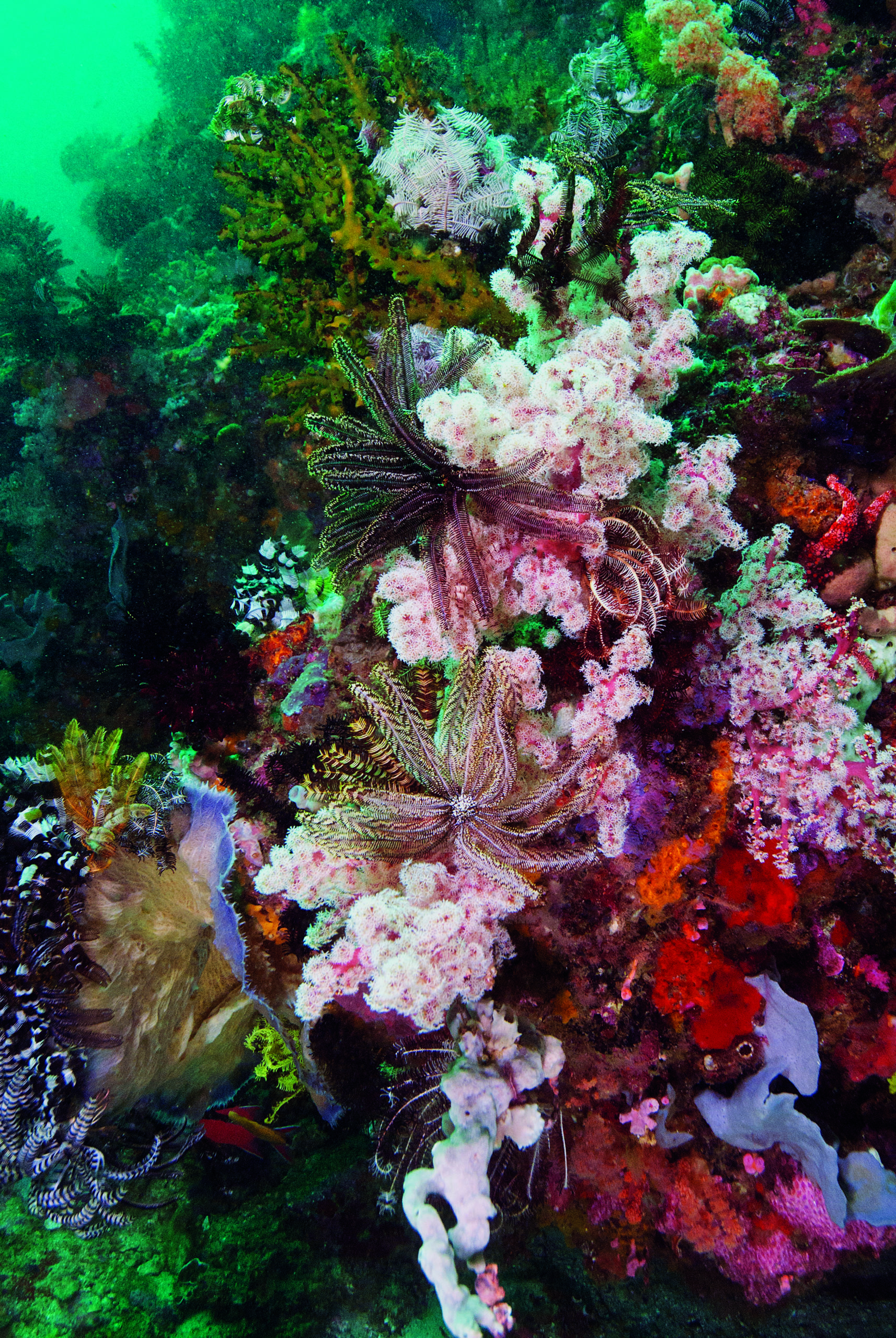
There, we delightedly watched as giant trevally and huge, metre-long African pompano made repeated strikes at smaller fish, feeding all around us.
After a number of dives on the many sites in this area, we continued south toward Rinca Island, in the centre of Komodo’s cool-water – 22 degrees C – diving region (a 5mm full suit was adequate for me, though some dressed more warmly, especially when usually getting four dives a day). Our first dive there was an early-morning one, at a famous site – Manta Alley. Just off a rocky islet, a slanting, coral slope forms a shallow ridge that reaches the sand at about 18m.
The ridge swarms with butterflyfish and wrasse, creating a large manta-cleaning station. As we settled in around the spot, right on cue, mantas began sweeping in, usually three or four at a time, working their magic on all of us. All too quickly, air and time spent, we headed up to the shallows for a safety stop, seeing many different fish and a number of blue-spotted rays, along with mantas continuing to pass closely overhead.


Another favourite dive in this area, in the channel between Nusa Kode and Rinca, remains one of the most-unusual dives I’ve ever experienced. In the greenish water is a unique dive site that may actually qualify as one of the single-most colourful places on the planet. Unimposing topside, just a wave-washed bit of rock breaking the surface, underwater, Cannibal is an extravagant surprise of nature – a huge, rock pinnacle utterly buried under a one- to two-metre-thick covering of the most-exotic, outrageously-coloured life imaginable.
Huge, purple gorgonian fans, dark green stands of Micrantha corals, lime-green sea whips, spiral corals, soft corals of seemingly every colour of the palette, and thousands of rainbow-hued crinoids are just the beginning, for much of the effect is created by the combined mosaic of vibrant, small life crammed into every possible space – yellow and white miniata sea cucumbers, brilliantly coloured sea apples, zebra fire urchins and so many more, not to mention the thick haze of schooling fish swirling over everything.
Later on my trip, at Rinca, an ultimate pay-off – a hike through Komodo National Park, where I have an adventurer’s dream realised – an intensively close, eye-to-eye encounter with a two-and-a-half-metre-long Komodo dragon. As I kneel and shoot, the huge, primitive creature before me quickly becomes focused, fixated even, on nothing but… me.
My adrenalin courses, my camera’s images click one after another. Watching the incessant flicking of his long, forked tongue, tasting me through the air, I’m flooded with extraordinary sensations. The dragon’s only other movement is to slowly, bit by excruciating bit, edge closer and closer… until my guide finally inserts his ‘dragon staff’ between us. As if from afar, I hear myself whisper, ‘Lord, Lord’.
Ahh, yes, Komodo.
Unimposing topside, just a wave-washed bit of rock breaking the surface, underwater, Cannibal is an extravagant surprise of nature – a huge, rock pinnacle utterly buried under a one- to two-metre-thick covering of the most-exotic, outrageously-coloured life imaginable
We’re heading steadily southward, where we’ll soon trade the sparklingly-clear, warm waters of the north for the cool, life-filled waters around the island of Rinca, and, oh yeah, its wandering hordes of Komodo dragons
Here be dragons - The Komodo dragon, also known as the Komodo monitor, is the largest species of lizard on Earth and can grow to more than three metres in length.
Aboard the Moana - The Moana combines a traditional atmosphere with all modern conveniences on cruises in the Komodo National Park of Indonesia. She is a classic 30-metre Phinisi schooner, able to take up to ten guests. All cabins have air-conditioning and ensuite bathrooms with water flush. Although built in a traditional-style, the Moana is a modern sailing vessel built in 2004 with all the comforts of a new diving and cruising boat. There are five cabins aboard Moana - two double-bed cabins, two twin-bed cabins, and one family cabin. There is an air-conditioned indoor salon at the stern of the ship, and a lot of deck area at the bow to relax. On deck you find a spacious dining table with romantic indirect lighting. The Moana - built from teak and ironwood, which lends a warm atmosphere to the whole liveaboard lifestyle - mainly runs five- or six-day dive safaris and snorkel tours. With ten years of experience, the crew can adjust and plan a suitable itinerary for the guests onboard. On arrival at Komodo airport in Labuhan Bajo (LBJ), Flores, you will be picked up by Moana staff, and after just a ten-minute drive you will be on board the vessel and sipping your welcome drink. A typical day aboard follows the theme ‘dive-eat-sleep-repeat’. www.moanacruising.com
Photographs by Al Hornsby



